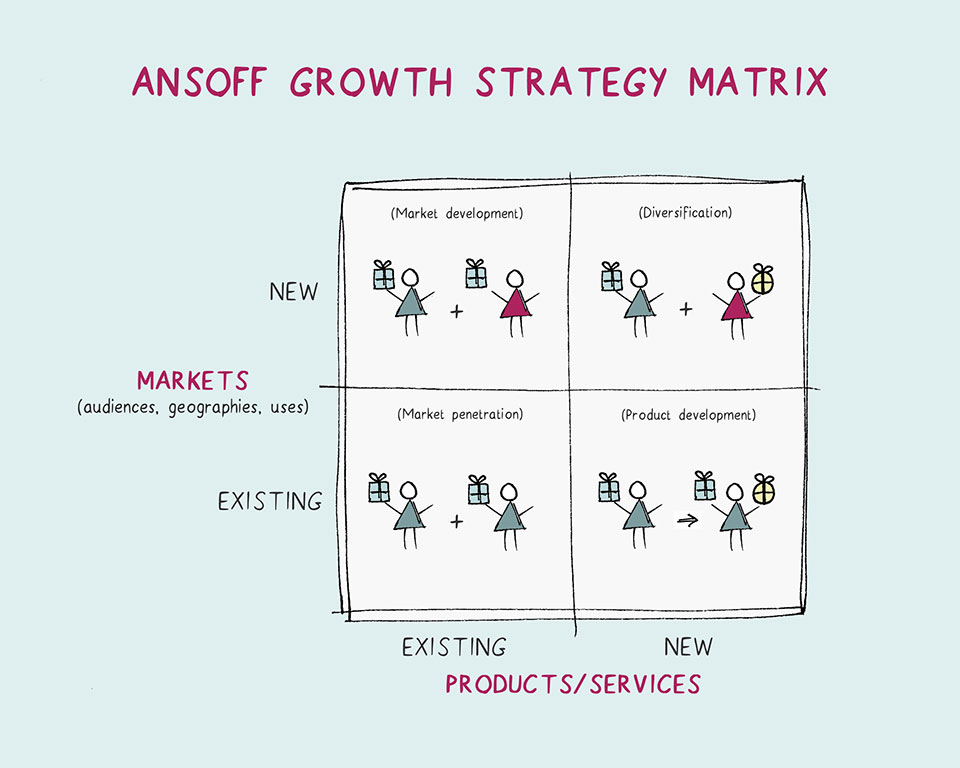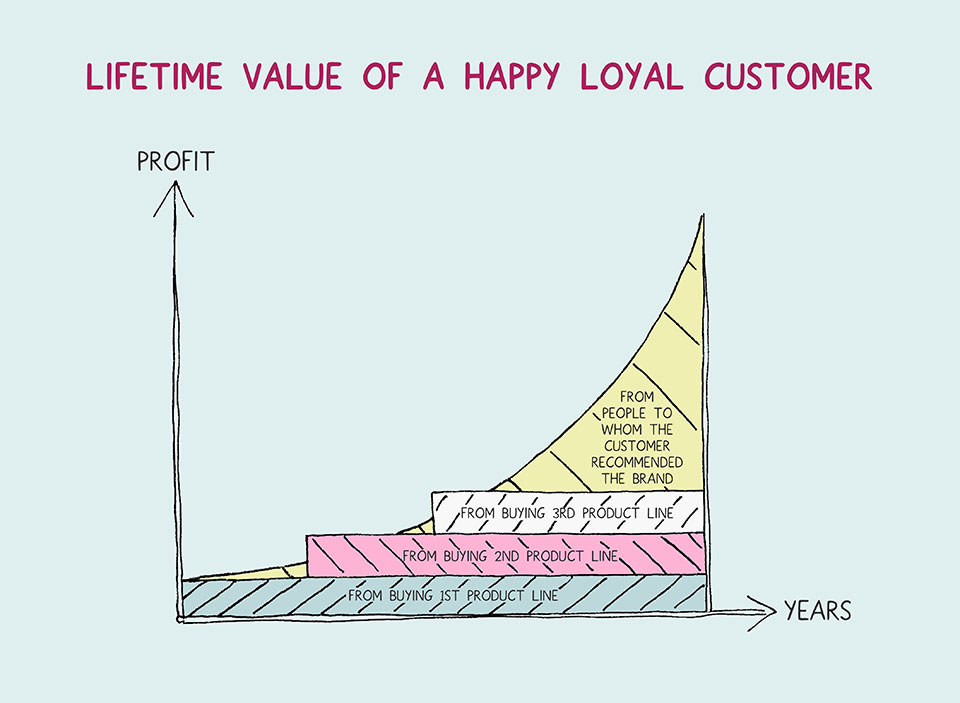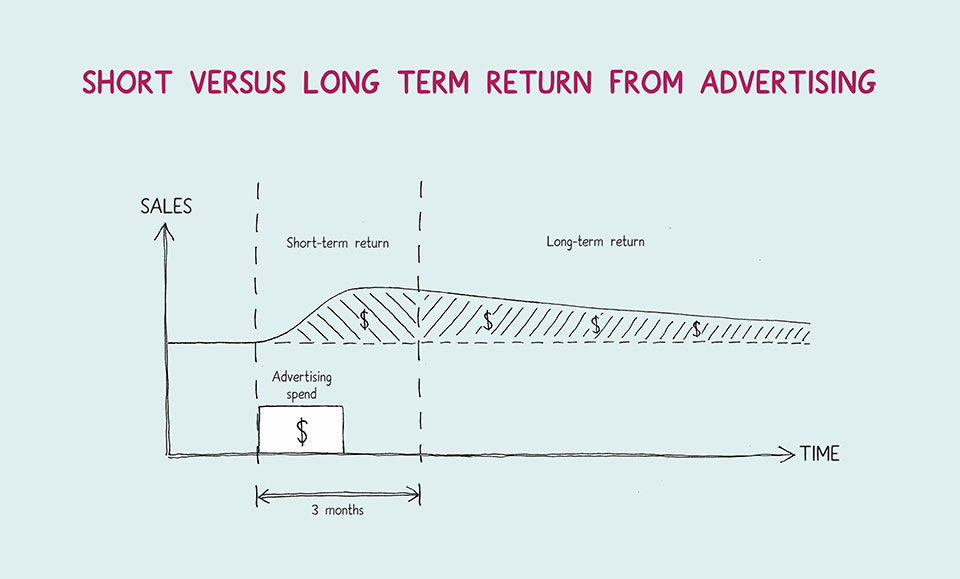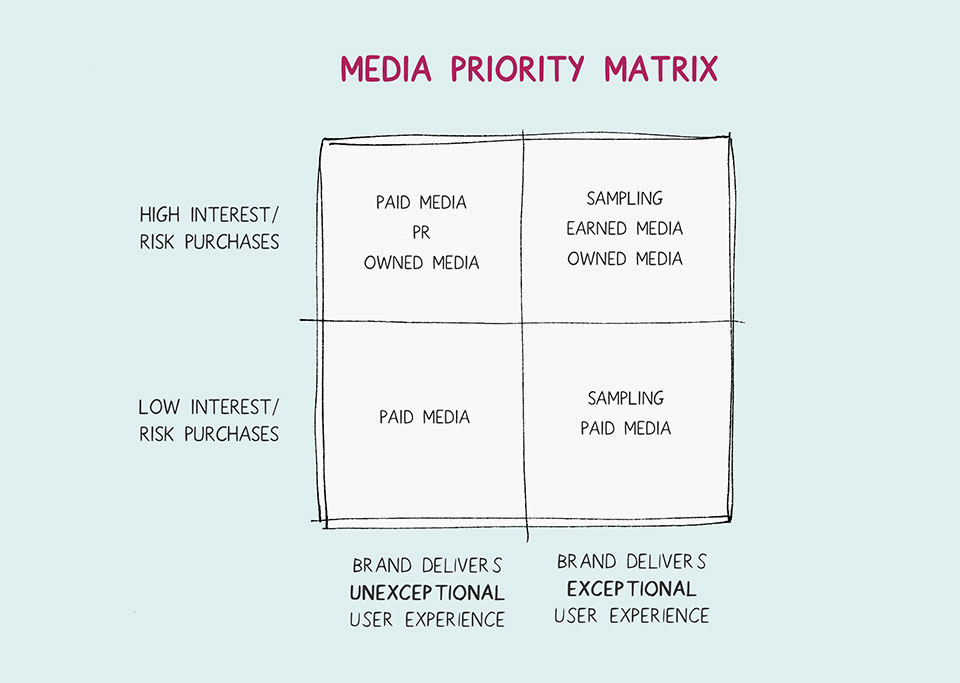How To Make The Most Of Your Marketing Spend

Marketing has the potential to transform the fortunes of a business. It can enable existing products to scale substantially or identify unexpected new opportunities for growth. On the other hand, marketing can be a costly mistake if it not focussed on the right priorities. To make the most of their marketing spend, companies need to align their marketing efforts tightly with their business’s growth strategies.
The Ansoff Matrix, introduced by mathematician and business leader Igor Ansoff, highlights four options for achieving growth. The key decision is whether to scale an existing offer or develop something new.
How much to spend on marketing and how to spend it depends on the strategy adopted.
Market Penetration
This strategy is for companies with a product that is strong compared to competitors’ but hasn’t yet been discovered by much of its target audience. In other words, it still has a lot of ‘headroom’ for growth that could be unlocked by investing further in distribution-building and promotion. This ‘launch phase’ lasts whilst headroom remains high, not a fixed time period. As a rule of thumb, a brand or product should not move on from its launch strategy until it has reached at least 60% -70% awareness. When pursuing this strategy, marketing spend should be high, and focussed on sales activity and advertising targeted at a broad audience. The return on advertising investment is generally higher for new products than established products. Although it is possible for new products to grow purely by word of mouth, even a modest investment in marketing is usually needed to kick start the process. Launch advertising pays back because people are much more likely to buy a brand or product they have some familiarity with. This is known in psychology as the ‘mere-exposure effect’ – people develop a preference for things merely because they have been exposed to them before. This make sense from an evolutionary point of view – things you’ve experienced before that haven’t killed you are probably alright! A key role of marketing for new products is simply to create familiarity and thereby build brand predisposition.
The U.S. Small Business Administration (Caron Beesley, June 4th, 2012) recommends that small businesses making reasonable profits should spend 7-8% of gross revenue on marketing and advertising and in October 2019, Gartner reported that businesses in North America and UK spend c.11% of revenues on advertising. If these figures seem high, consider how much Amazon spent in its first few years of trading. Between 1995 and 1999, the company grew sales from $511 to $1.6m. During this launch period, it spent an incredible 25% of net sales on marketing – nearly three time more than it spent on developing its technology. Amazon understood the need to build its customer base and the importance of marketing in achieving this. Gaining customers not only helps in the short term but has lasting commercial value – provided the product delivers a good experience. The value comes from repeat purchase, from the opportunity to cross-sell other products and from customer advocacy that helps attract more customers (see Product Development below). Amazon’s exponential growth was fuelled both by gained new customers and adding new product lines to its store for its expanding customer base to buy.
Market Development
This is an effective strategy if the brand is reaching saturation in its current market but has the potential to replicate its success among different types of consumer or in new regions. Success depends on delivering impactful marketing activity, as well as efficient distribution to new audiences. With this strategy, the role of marketing is essentially the same as with market penetration. The difference is that new types of consumer are being targeted which might require adjustments to the marketing messages and content. For example, when launching in a new country, there are often cultural differences to accommodate.
Product Development
This is a viable strategy if existing customers represent a large enough target audience in their own right, have a high regard for the brand and would be receptive to new products it offers. Brands seen as trustworthy and innovative have an advantage here because people believe their new products are worth buying and tend to scrutinize them less. This explains the queues of people outside Apple stores in the 2000s waiting to buy the brand’s latest gadget. For a product development strategy to succeed, the company needs enough budget to develop exciting new products that the brand’s loyal customer base will snap up. With the product development strategy, marketing can still play a role in launching the new products and can provide a good return on investment, but it plays a less critical role in success. A brand with a large base of satisfied customers already has a receptive audience primed to buy the new products and customer databases offer a cost-effective way of showcasing these products to the audience.
The success of this strategy depends more on the brand’s reputation and the quality of its innovations. Video game company Atari used a product development strategy in the early 1980s. It had sold over 10 million Atari 2600 game consoles in the US alone and was making good money from a continual stream of high-quality game releases (including Space Invaders and Pac-Man). In the rush to launch more games, however, quality standards began to fall, and sales quickly followed. In an attempt to reverse the sales decline, Atari invested heavily in its game based on the successful Steven Spielberg movie E.T. the Extra-Terrestrial. Atari produced millions of game cartridges and spent heavily to advertise the game the run up to Christmas 1982.
The game, which had been developed in just five weeks so that it could be in stores before the holiday season, was dismal. It scored poorly in product reviews and Atari users – who were already disappointed with the company’s other recent games – bought far fewer copies than the company had expected. The unsold cartridges were, famously, buried in the dessert in New Mexico to mark what was thought at the time to be the end of the video game industry. The moral of the story is simple – never waste money marketing sub-standard products. This is even more true today in the age of social media when news of disappointed customers spreads fast and even the best advertising cannot compensate for fundamental product weaknesses. Conversely, if you have a product that stacks up well versus competitors, you are likely to generate a handsome return if you tell as many potential customers about the product and its advantages. In fact, even if the advertising doesn’t pay back in the short-term, the long-term return for strong products can be far greater, so if your company has deep enough pockets to fund it, marketing support is likely to be prove worth the investment in time.
Diversification
This strategy is extremely rare since it is only viable if the company has the money to develop new products and expand into new regions at the same time. This only tends to occur if the company has a technology or capability that is way ahead of the curve and has plentiful financial backing. If the required funding is available, however, the marketing principles described in the two sections above both apply.
Media Choices
The final consideration when aiming to make the most of your advertising budget is choosing the media that will deliver the best return i.e. the media best suited to the marketing challenge. The most effective media for a brand depends primarily on whether it delivers a strong user experience and on how much care and attention customers pay when making their brand choice. The ‘Media Priority Matrix’ below indicates the marketing activities that are most effective depending on the brand and category context.
For brands in high intertest categories that deliver an exceptional use experience, the most cost-effective way to build business is to ensure as many relevant people as possible have a chance to experience what the brand offers and to publicise positive customer reviews and advocacy as widely as possible. In low interest categories, brands with a strong product should also make use of sampling and positive customer feedback but may need to use paid media to spread the word widely.
Brands that deliver a mediocre experience should, ideally, be improved before putting any media investment behind them, but if this isn’t possible, they can benefit from paid and owned media designed to create a positive impression. In these circumstances, focussing on a specific area in which the brand delivers reasonably well is usually the best option.
Conclusion
Companies can make the most of their marketing by prioritising activities that best serve the business strategy, adjusting budgets depending on the role marketing needs to play and using media best suited to the task.
Written by Dan White.
Bring the best of the CEOWORLD magazine's global journalism to audiences in the United States and around the world. - Add CEOWORLD magazine to your Google News feed.
Follow CEOWORLD magazine headlines on: Google News, LinkedIn, Twitter, and Facebook.
Copyright 2025 The CEOWORLD magazine. All rights reserved. This material (and any extract from it) must not be copied, redistributed or placed on any website, without CEOWORLD magazine' prior written consent. For media queries, please contact: info@ceoworld.biz












